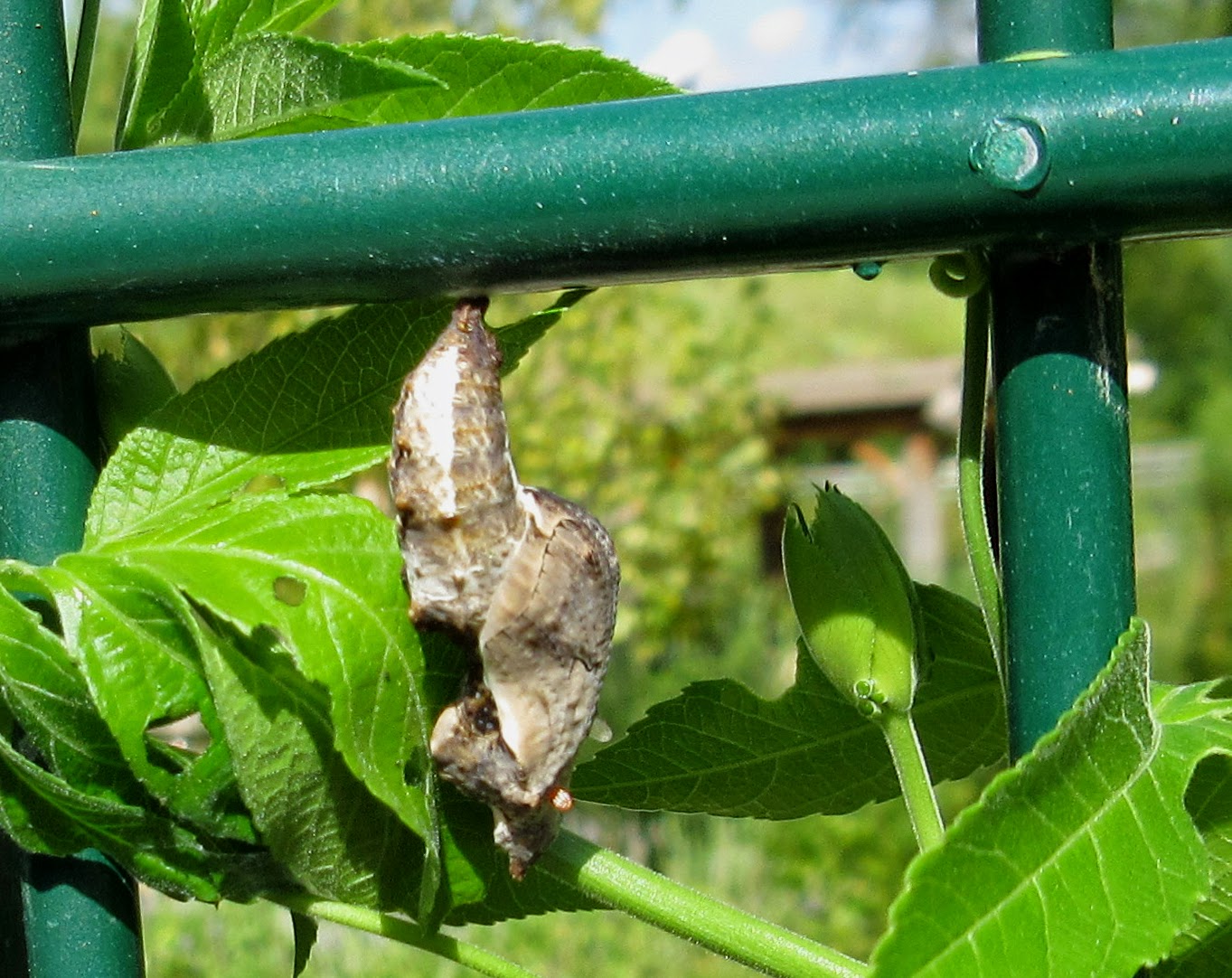I am delighted to share these photos of the life cycle of a fritillary, even though they were not taken at Oak Point Nature Preserve. These were all taken September 5, 2014 on two passion flower vines at the Rory Meyers Children's Adventure Garden of the Dallas Arboretum within about five minutes. It was a major thrill.
 |
| Butterfly laying an egg. |
 |
| Another egg laid. |
 |
| A brand new egg. |
 |
| Egg close-up. |
 |
| Another egg AND a fritillary caterpillar. |
 |
| Caterpillar on the passion flower vine. |
 |
| A very hungry caterpillar. |
 |
| Passion flower or Passiflora |
 |
Fruit of the passion flower, sometimes called a pop or a maypop.
|
 |
| A chrysalis before the butterfly emerges. |
 |
| An empty chrysalis. |
Sadly, I did not actually witness a fritillary emerging from a chrysalis!
Here are a couple of interested, and probably hungry, bystanders:
 |
| An assassin bug dressed for the occasion. |
 |
| An anole. |
According to the
Texas Butterflies website, passion vine and passion flower are the host plants of the Gulf Fritillary. There nectar plants include lantana, butterfly bush, zinnia, aster, thistle, verbena, and others. Here is a
useful article about passiflora from the
Dallas Morning News.
Thanks to the Online Etymology Dictionary for explaining the word origin. I thought
frit had something to do with silver. Nope.
Next time I will share Oak Point fritillaries. Thanks for stopping by this blog.
fritillary (n.)  type of butterfly, 1857, earlier a type of plant (Fritillaria Meleagris, 1633), from Latin fritillus "dice-box," from fritinnire "to twitter," imitative of the rattle of dice. The butterfly so called perhaps from resemblance of its markings to those of dice; or the names may have been given in confusion, perhaps on the notion that fritillus meant "chessboard."
type of butterfly, 1857, earlier a type of plant (Fritillaria Meleagris, 1633), from Latin fritillus "dice-box," from fritinnire "to twitter," imitative of the rattle of dice. The butterfly so called perhaps from resemblance of its markings to those of dice; or the names may have been given in confusion, perhaps on the notion that fritillus meant "chessboard."













No comments:
Post a Comment